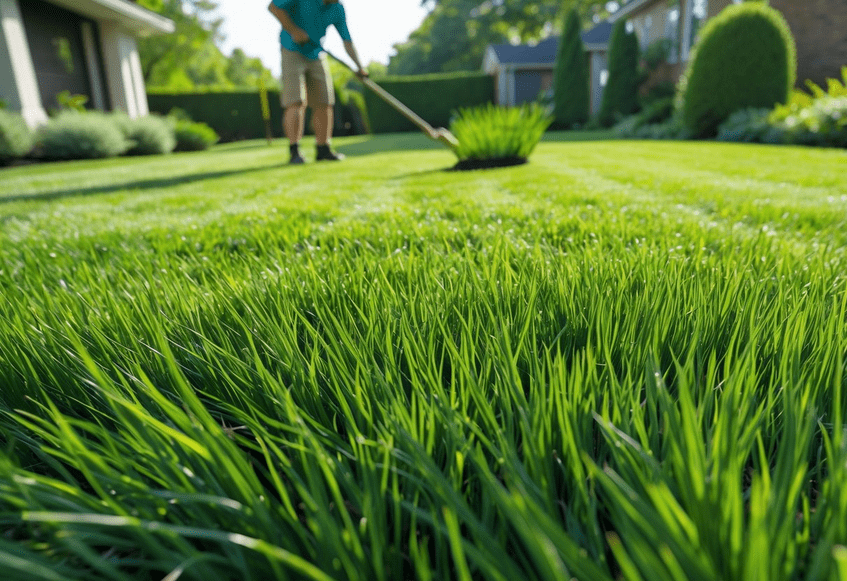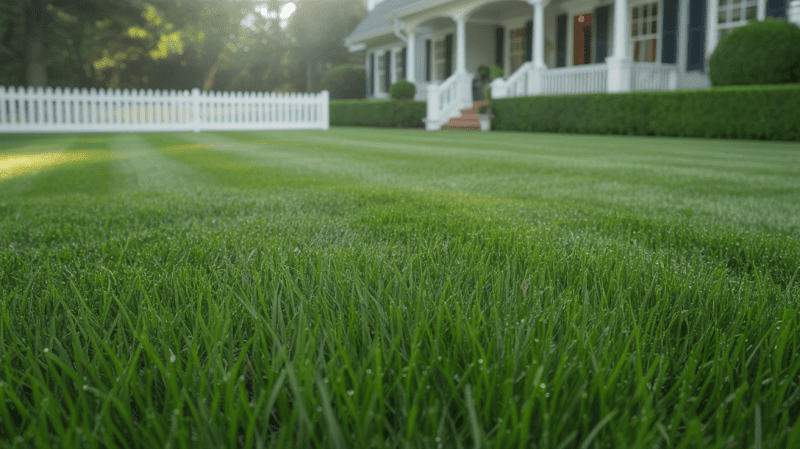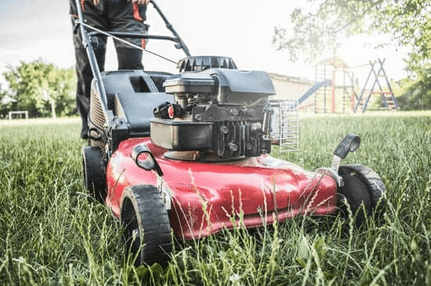What Is Tall Fescue Grass? Key Features, Benefits, and Care
Tall fescue grass is a cool-season grass with a deep green color and a clumping growth habit. It's hardy and adaptable, handling heat, drought, shade, and heavy foot traffic—so it's a reliable choice for a lot of lawns.
Its deep root system lets it survive dry conditions better than many other grasses.

You'll often see tall fescue in landscapes where durability and low maintenance matter most. It grows in a variety of soils and holds up through different seasons.
This grass thrives in cooler climates but can handle some heat. Because it grows in dense clumps, it forms a thick, textured lawn that can recover from wear over time.
Key Takeaways
- Tall fescue is a durable grass suited for different climates and soil types.
- Its deep roots mean it needs less water.
- It handles shade and heavy use while staying dense and green.
Defining Tall Fescue Grass
Tall fescue is a tough cool-season grass known for its adaptability and deep roots. Its growth habits make it stand out from other grasses.
Getting to know its origins and traits helps us appreciate why so many people use it.
Species Overview and Origin
Tall fescue, or Festuca arundinacea, is a cool-season perennial grass. It started out in Europe but has spread across much of North America since the late 1800s.
It spreads slowly, behaving like a bunchgrass instead of sending out underground stems. This grass was first identified in the 1700s, and Kentucky 31—a popular variety—came out in the mid-20th century and made tall fescue more common in lawns and pastures.
Breeding has improved its texture and growth for home lawns over time.
Key Characteristics and Growth Habits
Tall fescue grows in dense clumps with coarse, wide leaves that feel ridged and a bit rough. If you don't mow it, it can reach 2 to 5 feet tall.
This grass thrives in spring and fall, and thanks to its deep roots—sometimes 2 to 3 feet deep—it handles heat and drought better than most cool-season grasses. Most people mow it to 2 to 3 inches for lawns.
It doesn't need as much fertilizer as some other grasses and produces very little thatch. Tall fescue also stands up well to heavy foot traffic and works well in shaded or partly shaded areas.
Comparison to Other Cool-Season Grasses
Compared to Kentucky bluegrass and red fescue, tall fescue feels a bit coarser but handles drought better because its roots go deeper. Kentucky bluegrass spreads with underground rhizomes and forms a dense, uniform lawn, while tall fescue grows in clumps and doesn't spread as much.
Red fescue has finer leaves and does great in shade, but it can't handle heat and drought like tall fescue. Unlike warm-season grasses, tall fescue keeps its color in cooler months but recovers more slowly from summer stress. Turf-type tall fescues have a finer look, getting closer to the texture of Kentucky bluegrass.
Tall Fescue Lawn Uses, Performance, and Maintenance

Tall fescue lawns work for all sorts of needs because they're tough and pretty easy to care for. They grow well in changing weather and handle shade, drought, and foot traffic better than a lot of other grasses.
Knowing how the lawn performs and how to care for it helps us keep it healthy and looking good through the year.
Adaptability and Climate Tolerance
Tall fescue adapts to a range of climates, especially in transition zones where both cool and warm seasons hit. It grows best when temperatures are between 60°F and 75°F but stays green longer into warm months than most cool-season grasses.
Its deep roots let it reach water in dry conditions, so it handles drought better than some other grasses. Still, really hot or very cold weather can stress it out.
You'll get the best results in areas with moderate rainfall and temperature swings. In hotter zones, lawns might need extra irrigation and a bit of shade to keep the turf happy.
Shade, Drought, and Disease Resistance
Tall fescue does well in shade, growing in spots with partial to moderate sunlight. Its broad leaves soak up enough sun, even under trees or near buildings.
This makes it a solid pick for yards with uneven sun. During drought, tall fescue uses its deep roots to last longer between waterings, but it still needs about 1 to 1.5 inches of water weekly to stay healthy.
Diseases like brown patch and fusarium blight can pop up, especially if the lawn stays wet for too long. Watering in the early morning helps the blades dry out during the day and keeps disease in check.
Pros and Cons for Turf Lawns
Pros
- Handles drought well thanks to deep roots
- Stays healthy in mixed sun and shade
- Stands up to heavy foot traffic
- Needs less fertilizer and water than fine-textured grasses
Cons
- Coarser leaves may feel less soft underfoot
- Doesn't do as well as Kentucky bluegrass in really cold climates
- Grows in clumps and spreads slower, so the turf can look less uniform
Seeding, Reseeding, and Care Best Practices
Early fall works best for seeding tall fescue. Cooler weather helps seeds settle in and start growing.
Before seeding, loosen the soil and pull out any weeds. Spread about 8 to 10 pounds of seed per 1,000 square feet—don’t worry about being exact, just aim for even coverage.
Water lightly and often to keep the soil moist until you see young grass poking through. It’s a bit of a waiting game, but patience pays off.
Reseeding, or overseeding, thickens up patchy lawns. Mow your grass short first and clear away the clippings to help seeds reach the soil.
Fall’s a solid time for overseeding, too. The weather’s just right for new growth.
For regular care, mow at about 2.5 to 3.5 inches. Taller grass grows deeper roots and handles dry spells better.
Fertilize in early spring and again in late fall with a slow-release, balanced nitrogen fertilizer. It’s not rocket science, but timing matters.
Water deeply but don’t overdo it—let the soil dry out a bit between waterings. Keep an eye out for weeds, pests, or signs of disease so you can tackle problems early.



